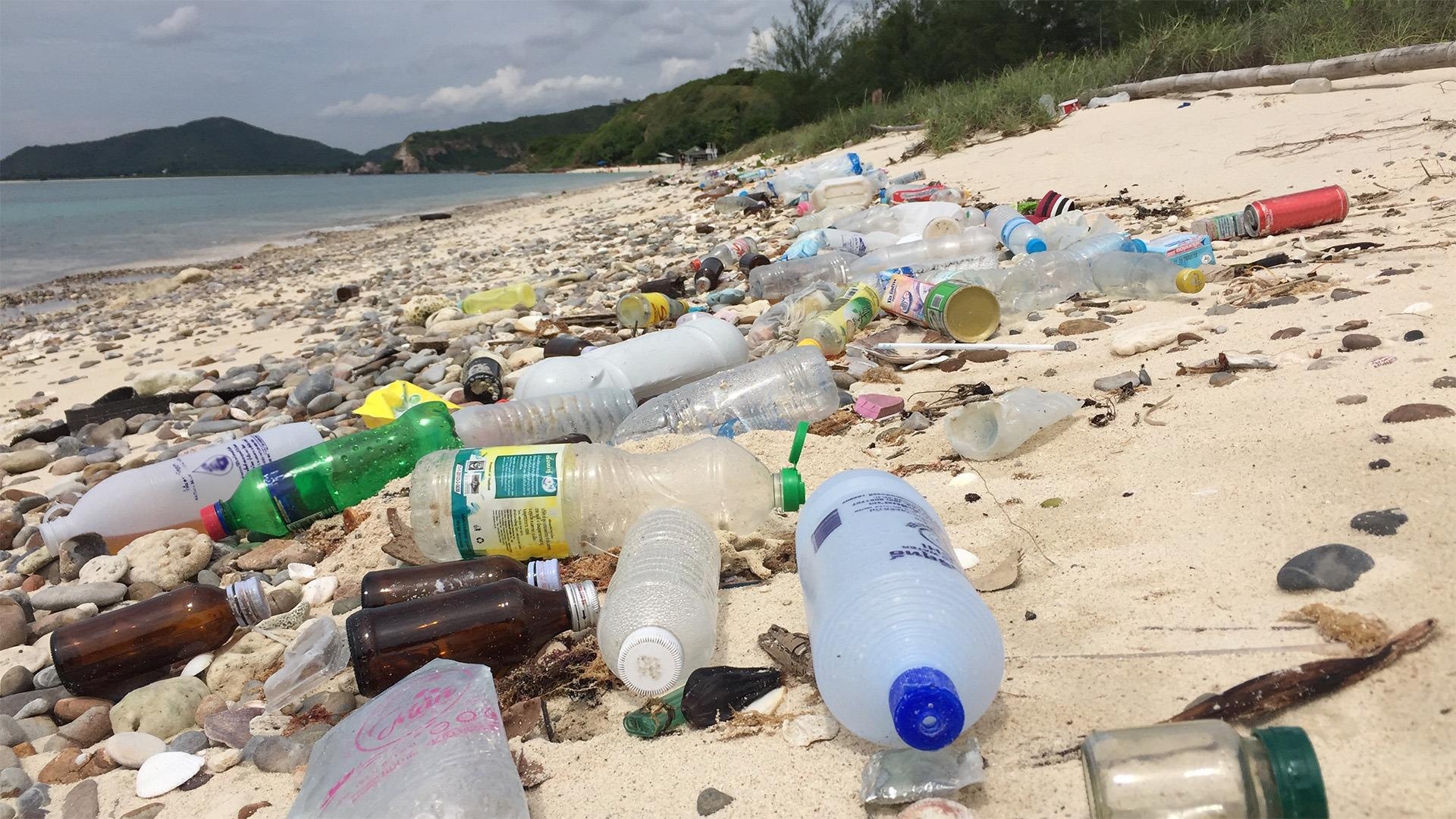During the last half-century, the everyday life of humans has been drastically changed for the better due to the billions of tons of plastic items manufactured in the “Plastic Age.” However, the plastic waste that has penetrated the environment is presenting new issues for nature.
 Plastics on the beach. Image Credit: Kyushu University.
Plastics on the beach. Image Credit: Kyushu University.
A new study directed by Kyushu University seeks to simulate the destiny of plastics that have entered the oceans. The study approximates that the oceans now contain 25.3 million metric tons of plastic waste and almost two-thirds of that cannot be tracked.
Even more disturbingly, the study proposes that this might just be the tip of the plastic-waste iceberg, with additional 540 million metric tons of mishandled plastic waste — approximately 10% of all plastic manufactured thus far — still stuck on land.
While researchers have been charting the surfaces of oceans and beaches to establish how much plastic waste has entered into the oceans, ample amounts of ocean plastics are believed to be on the seafloor or deep below the surface, obscured from scientific observation using standard sampling gear.
To assess the amount and whereabouts of plastic waste in Earth’s oceans, we have to consider the whole process from their birth to burial, starting with emission from rivers into the ocean and continuing with their transportation and fragmentation into pieces.
Atsuhiko Isobe, Study Lead and Professor, Research Institute for Applied Mechanics, Kyushu University
In the new study, Isobe’s team tried to approximate the amount of these obscured ocean plastics by developing models that mimic these processes. The researchers derived parameters based on existing studies, which define how plastics age and decay. They also used satellite-acquired wind data to include the particles’ movement.
As sources of plastic waste for the simulations, they modified the latest estimates of plastic-fragments emission in rivers by either the gross domestic product of a country dating back to 1961 or estimations of mishandled plastic waste generation after 2010. The researchers also incorporated an ocean-based component from the international fisheries sector, which is believed to generate 20% of plastic emissions in rivers.
Their outcomes project that large plastics and smaller fragments (microplastics) floating on the surface of the ocean each are responsible for only around 3% of all marine plastics. While a similar volume of microplastics — plastic fragments under 5 mm in size — was projected to be present on beaches, 23% of the marine plastic waste was larger plastic garbage on the world’s coastlines.
Nevertheless, the simulations indicate that the other two-thirds of marine plastic may be in areas that make it difficult to track. More than half of this is heavy plastics that sunk to the seafloor as they are denser than seawater. Currently, half of the plastic items are composed of these heavy plastics, which include polyvinyl chloride (PVC) and polyethylene terephthalate (PET).
The rest are old microplastics discharged decades earlier that have since been shifted from the beaches and ocean surface and stored in the seabed and in other areas of the world’s oceans.
However, compared to marine plastics, the amount of mishandled plastic waste on land that could eventually enter the ocean and the ecosystems in the future may be 20 times bigger.
The scientists reached their figure for total mishandled plastic waste — which is one-tenth of the 5.7 billion metric tons of plastics manufactured so far — by integrating their estimates for the annual emission of plastic waste into the seas with the latest estimates for the total amount of plastic waste that was not incinerated, recycled or otherwise appropriately contained.
Being innately indecomposable, this half a billion metric tons of mishandled plastics will most probably last longer than humans on Earth.
We were able to estimate the budget of ocean plastics, but they are only the tip of plastic-waste iceberg on Earth.
Atsuhiko Isobe, Study Lead and Professor, Research Institute for Applied Mechanics, Kyushu University
His subsequent task is to measure the locations of the approximately half a billion metric tons of mishandled plastics stuck on land.
That’s going to be a Herculean task. Few advancements have been made so far in the field of ‘terrestrial plastics’ due to the lack of observation methods.
Atsuhiko Isobe, Study Lead and Professor, Research Institute for Applied Mechanics, Kyushu University
Undismayed, Isobe recently introduced a citizen science program using artificial intelligence (AI) and crowdsourced photos to measure the mass of plastic waste dumped on beaches and in cities. Simultaneously, he is continuing to track and enhance people’s insight into what is taking place with the plastics that enter the oceans.
Journal Reference:
Isobe. A & Iwasaki. S., (2022) The fate of missing ocean plastics: Are they just a marine environmental problem?. Science of The Total Environment. doi.org/10.1016/j.scitotenv.2022.153935.